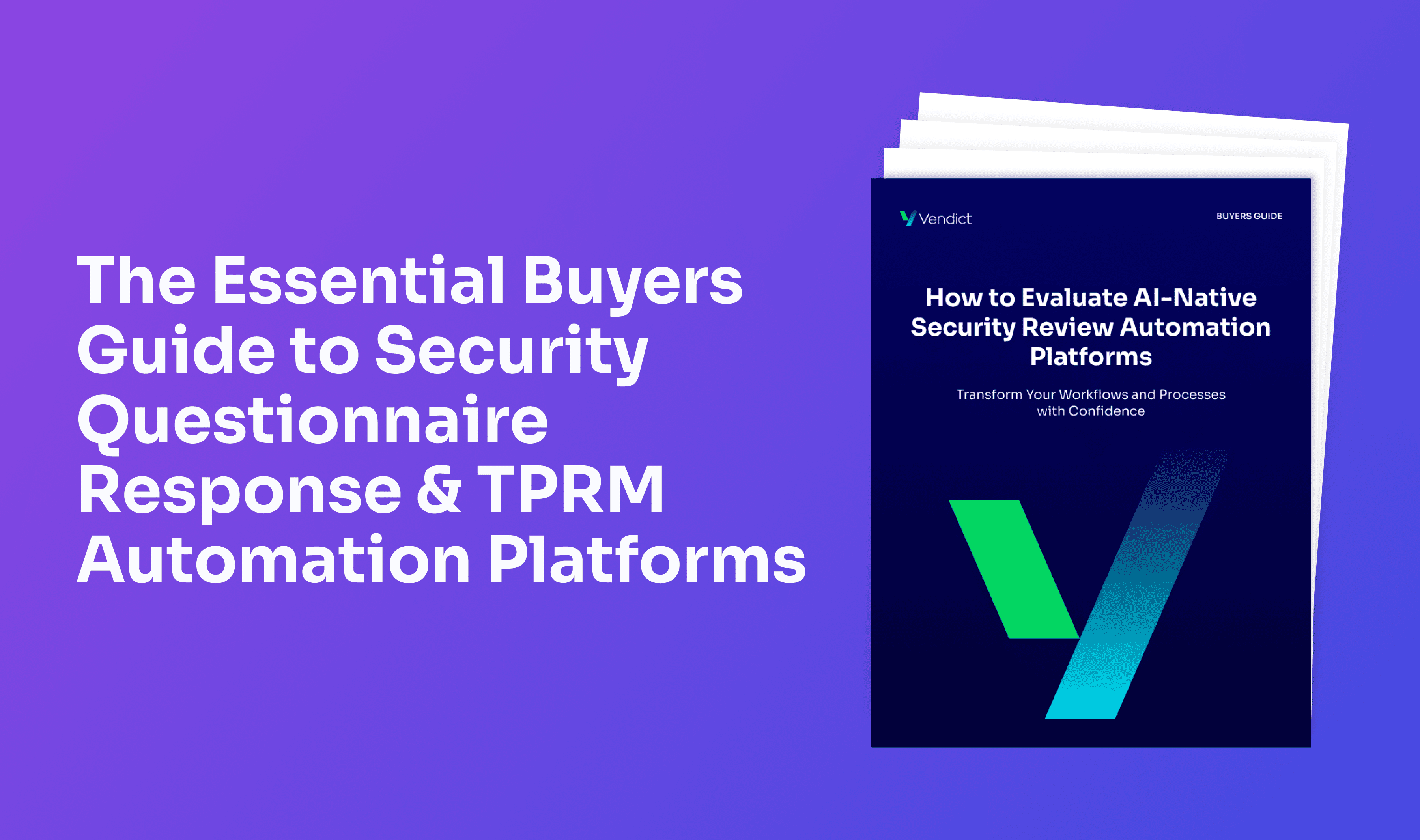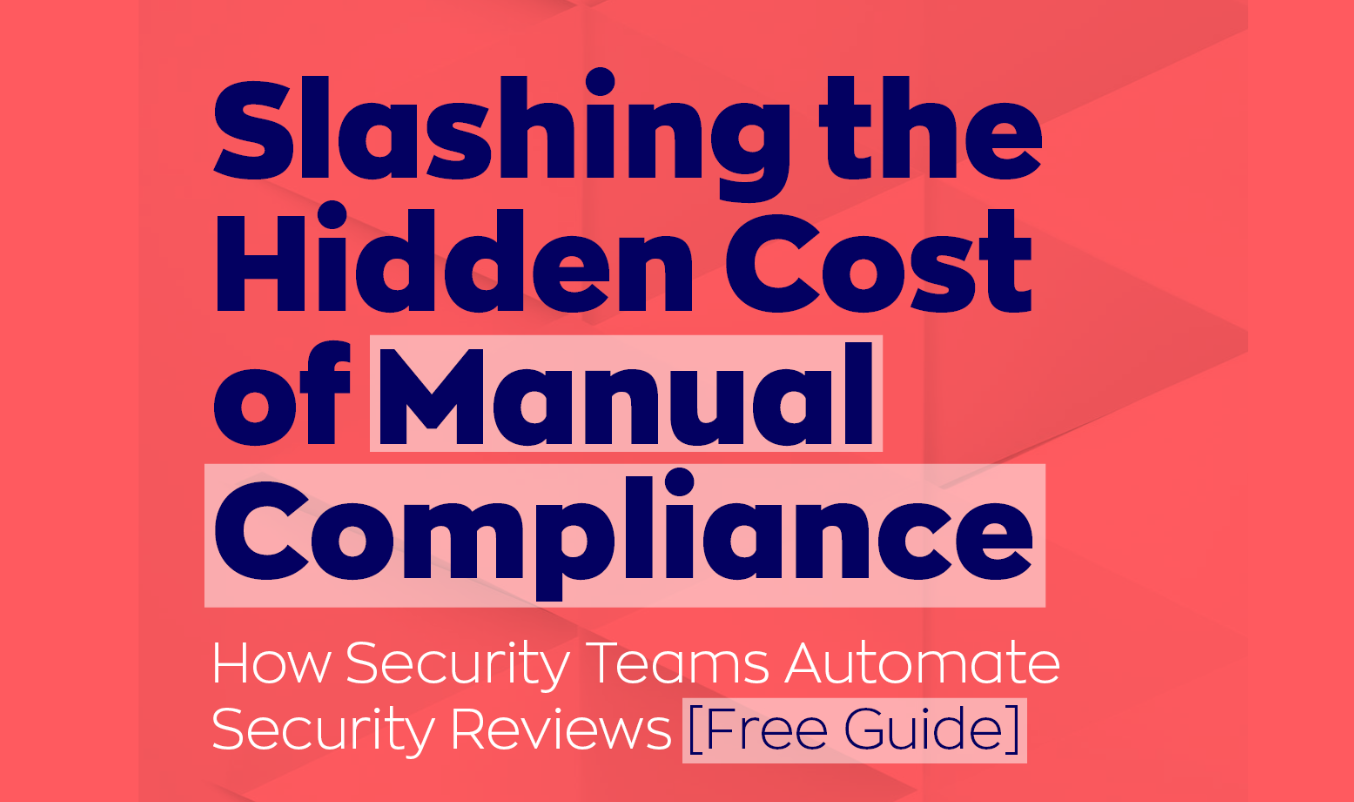50 Essential Security Questionnaire Questions

Security questionnaires have become a standard part of business, especially when companies share sensitive data with external vendors. These forms help organizations decide whether a vendor can be trusted to protect information and meet regulatory requirements.
The challenge? They’re time-consuming. Some questionnaires run into the hundreds of questions and pull in teams from IT, security, legal, compliance, and beyond. When deadlines are tight or multiple requests hit at once, it can get overwhelming fast, in addition to jeopardizing chances of winning deals..
This guide is here to help. We’ve compiled 50 of the most commonly asked security questionnaire questions, grouped into easy-to-navigate categories.
If you're responsible for answering these, this overview will help you know what to expect and how to stay ready. We’ll also explore how teams are starting to use smarter tools to respond faster and more confidently - without adding to their workload.
What is a Security Questionnaire?
We’ve already explored security questionnaires in detail, but here's a quick recap if you’re looking for the short version.
A security questionnaire is a structured set of questions designed to assess a company’s security practices, usually as part of a vendor evaluation. It helps organizations determine whether their partners follow appropriate protocols and can be trusted with sensitive data.
These questionnaires have become routine in vendor risk management, especially as businesses increasingly depend on cloud services, SaaS tools, and third-party services or platforms.
From healthcare to finance to tech, nearly every industry now uses security questionnaires to evaluate a vendor’s security posture and minimize the risks of data breaches or compliance violations.
Understanding the Security Questionnaire Process
Security questionnaires have become a routine part of doing business, especially during procurement. When one company considers partnering with another, particularly as a vendor or service provider, a questionnaire is often among the first steps. It essentially asks: Can we trust you with our data?
These questionnaires help organizations protect sensitive information, comply with industry regulations, and manage the inherent risks of relying on third parties.
By investigating topics like encryption, access controls, and compliance frameworks, companies can spot potential vulnerabilities before making any official announcements.
But this isn’t just one-sided. For the company sending the questionnaire, it’s about verifying that a vendor meets security standards. For the vendor, it’s a chance to show they take security seriously - and stand out as a trustworthy partner.
When done right, this process reduces risk and lays the groundwork for stronger, more transparent relationships from day one.
The Reality of Responding to Security Questionnaires
Security questionnaires are essential, but they can also be a serious time sink. A typical one might take 2 to 4 hours to complete, while the more complex assessments can take several days or even weeks.
Some organizations report spending up to 30 business days on a single questionnaire, especially when input from multiple departments is needed.
So why is the process so demanding?
Many questionnaires include 200 to 300 questions, covering everything from encryption methods to HR policies. Answering them thoroughly means gathering input from IT, security, legal, compliance, and operations - all of whom are already balancing other responsibilities. Coordinating that back-and-forth can quickly eat into valuable time, leading to comprises in response’ quality and accuracy.
Why Responding Is So Challenging
Beyond logistics, there’s the challenge of technical complexity. Many questions require deep subject matter expertise, and responses often need to be backed up with documentation like audit reports, screenshots, or internal policies. It’s not just about saying the right thing; it’s about proving it.
When answers are rushed, inconsistent, or outdated, they can slow down deals or trigger compliance concerns later on.
How Automation Is Changing the Game
With increasing pressure to respond quickly and accurately, more teams are turning to AI security questionnaire automation to do the heavy lifting. These tools allow teams to reuse verified answers, maintain consistency across submissions, and keep supporting documents organized.
What once took days can now be handled in hours - sometimes even faster.
Instead of answering the same questions repeatedly, teams can focus on the ones that genuinely require input. AI security questionnaire automation doesn't replace people- it simply makes the entire process faster, smoother, and more reliable.
Navigating the Essential Security Questions
To make things easier to digest, we've grouped the 50 key security questionnaire questions into ten functional categories. Each one focuses on a different aspect of organizational security - from technical safeguards to vendor oversight and regulatory compliance.
Understanding these categories helps teams assign the right subject matter experts to the right sections, leading to faster, more accurate responses. It also adds structure to a process that can otherwise feel chaotic and overwhelming.
These categories aren’t just thrown together. They’re modeled after industry-recognized frameworks like ISO 27001, NIST, and CIS Controls - so if you’ve worked in security or compliance, they’ll likely feel familiar.
Here’s what we’ll be covering next:
1. Governance & Risk Management
2. Asset Management
3. Access Control
4. Network Security
5. Incident Response
6. Data Protection & Privacy
7. Vulnerability & Patch Management
8. Security Awareness & Training
9. Third-Party Risk Management
10. Business Continuity & Disaster Recovery
Let’s take a closer look at each one.
1. Governance & Risk Management
Strong governance and risk management are the foundation of a mature security program. These questions help assess whether security isn’t just an IT issue - but a leadership priority, woven into how the business operates and grows.
Here are key questions in this category:
1. How is your information security strategy aligned with your business objectives?
2. What is the process for identifying, assessing, and mitigating key security risks?
3. How often does top management review your security risk posture?
4. What role does the board or executive leadership play in security governance?
5. How do you ensure continuous improvement in your security program?
These questions aim to uncover whether security is reactive or proactive - and how leadership accountability, risk evaluation, and long-term improvement are being built into the organization’s DNA.
2. Asset Management
You can’t protect what you don’t know you have. Asset management is all about visibility - making sure every system, device, and data asset is accounted for, monitored, and properly maintained. It’s a key area of focus in security assessments because unmanaged assets often become easy targets.
Here are the questions that typically come up:
6. How do you maintain an up-to-date inventory of all information assets?
7. What process is followed when onboarding or decommissioning assets?
8. How are asset ownership and responsibilities assigned and tracked?
9. How are unauthorized devices or shadow IT identified and handled?
10. How is criticality of assets determined for security prioritization?
These questions dig into the structure behind your asset lifecycle - from how assets are brought in and tracked, to how they're retired or removed securely.
As organizations grow, managing assets across cloud platforms, remote endpoints, and third-party services can get complex fast - making this area one of the most revealing when it comes to maturity.
3. Access Control
Access control questions are at the heart of any security questionnaire - and for good reason. They reveal how well an organization limits access to sensitive data, and whether those limits are enforced consistently over time.
Here are five common questions in this category:
11. How do you manage user access rights throughout the employee lifecycle?
12. What controls are in place to enforce least privilege and need-to-know principles?
13. How do you detect and address excessive or unused access rights?
14. How are privileged accounts monitored and secured?
15. What authentication methods do you use for internal and external access?
Reviewers use these questions to understand whether access is actively managed or passively granted. As businesses scale, maintaining visibility into who has access to what - and why - becomes more complex. Tools like IAM and PAM systems, regular access reviews, and enforcement of least privilege all play a key role in signaling maturity here.
4. Network Security
Network security questions are designed to uncover how well an organization protects its infrastructure from unauthorized access, internal misuse, and external attacks. This part of a security questionnaire highlights the controls in place to detect, respond to, and contain potential threats.
Key questions in this category include:
16. How is your network segmented to reduce exposure to threats?
17. What controls are in place to detect and respond to network intrusions?
18. How do you manage remote access to internal systems?
19. How are network changes reviewed and authorized?
20. How do you handle firewall rule reviews and lifecycle management?
These questions go beyond basic configurations - they look for structured processes, strong access control, and ongoing visibility into how your network is evolving.
Assessors want to know that your network isn’t just secure today, but that it stays secure as the environment grows and changes.
5. Incident Response
Incident response questions in a security questionnaire aim to uncover how prepared an organization is when things go wrong. From phishing to ransomware to insider threats, assessors want to know you have a structured plan in place - and that it’s been tested in the real world.
Typical questions in this category include:
21. What is your process for identifying and responding to security incidents?
22. How do you ensure timely communication during a cyber incident?
23. What are the key lessons learned from your most recent incident?
24. How often do you test and update your incident response plan?
25. Who is part of your incident response team, and how are roles defined?
These questions help assess whether your organization is reacting or responding. Having a defined team, a repeatable process, and a communication plan - internally and externally - are signs of maturity.
Regular testing and post-incident reviews are what separate the companies that bounce back fast from the ones that scramble under pressure.
6. Data Protection & Privacy
With data breaches and privacy regulations making headlines, it’s no surprise that security questionnaires dig deep into how organizations manage and protect sensitive data. This section focuses on the policies, tools, and practices that safeguard both regulated information and personal data.
Expect to answer questions like:
26. How is sensitive or regulated data identified, classified, and protected?
27. What controls are in place to prevent data leakage or exfiltration?
28. How do you ensure data encryption at rest and in transit?
29. What measures do you take to protect personal data and comply with privacy laws?
30. How are data retention and disposal policies enforced?
These questions help evaluators understand not just your technical safeguards - like DLP and encryption - but also your compliance readiness under frameworks like GDPR, HIPAA, or ISO/IEC 27701. With growing global pressure on privacy standards, this is one section where vague answers just don’t cut it.
7. Vulnerability & Patch Management
This section of a security questionnaire reveals how seriously an organization takes proactive defense. It focuses on the process for identifying security flaws - and more importantly, how quickly and thoroughly they’re fixed.
Expect questions like:
31. How do you identify and prioritize vulnerabilities in your environment?
32. What is your standard timeframe for patching critical vulnerabilities?
33. How do you handle out-of-band or emergency patches?
34. How often are vulnerability scans and penetration tests performed?
35. What is your process for verifying that vulnerabilities have been remediated?
Security reviewers look for structured, consistent practices here - not just tools. Organizations are expected to prioritize based on risk, follow timelines for remediation (often within 72 hours for critical flaws), and verify that patches have been successfully applied. Regular scanning and testing are no longer optional - they’re a baseline expectation.
8. Security Awareness & Training
Even the best security tools can’t compensate for an untrained workforce. That’s why security questionnaires often dig into how organizations build awareness and influence employee behavior - not just once a year, but continuously.
Common questions in this section include:
36. How is security awareness training delivered and measured across the organization?
37. How do you tailor training for high-risk roles or departments?
38. What topics are covered in your annual security training
39. How are phishing simulations or social engineering exercises used?
40. How is employee understanding and behavioral change assessed?
These questions aren’t just about checking the “training done” box - they focus on how well your employees retain and apply what they learn.
Personalized training, hands-on simulations, and behavioral metrics (like click rates in phishing tests) are becoming standard. Mature organizations go beyond awareness - they aim for real cultural change.
9. Third-Party Risk Management
Vendors and service providers extend your organization’s attack surface - and security questionnaires are one of the most important tools for managing that risk. This section evaluates how well your organization vets, monitors, and governs external partners with access to your data or systems.
Expect questions like:
41. How do you assess the security posture of vendors before onboarding?
42. What contractual requirements do you enforce for information security?
43. How is ongoing security monitoring of third parties conducted?
44. What is your process when a third-party vendor is breached?
45. How are third-party access and data sharing controlled?
These questions help assess your maturity in managing the supply chain. From pre-contract risk reviews and data access controls to breach response protocols, reviewers want to see that third-party risk isn't treated as an afterthought - but as a continuous, trackable process built into your security program.
10. Business Continuity & Disaster Recovery
No security program is complete without a plan for when things go wrong. This section of the questionnaire focuses on how well your organization can maintain critical operations during disruptions - and how quickly you can bounce back.
Expect questions like:
46. How do you ensure continuity of critical business functions during a disruption?
47. What are your recovery objectives (RTO/RPO) and how are they tested?
48. How often do you conduct business impact analyses (BIA)?
49. How do you ensure the resilience of your backup and recovery systems?
50. How have you incorporated cyber resilience into your business continuity planning?
These questions help evaluators understand if your business can keep running - or quickly recover - in the face of cyberattacks, outages, or disasters. Clear recovery objectives, tested backup systems, and built-in cyber resilience are signs of a well-prepared organization.
Bringing It All Together
Security questionnaires can be time-consuming, but they serve an important purpose: helping organizations protect sensitive data, assess third-party risks, and build trust with their partners. Every question - from access controls to data privacy - helps paint a complete picture of your organization’s security posture.
Responding well requires more than having policies in place. It requires coordination across teams, attention to detail, and often deep subject matter expertise. That’s why more organizations are looking for ways to simplify the process without sacrificing quality.
At Vendict, we understand the effort that goes into these assessments. Our AI security questionnaire automation helps you respond faster, more consistently, more accurately and with greater confidence - so your team can focus on the work that actually drives value.
Security questionnaires aren’t just hurdles. They’re an opportunity to demonstrate your organization’s maturity, preparedness, and professionalism. And with the right tools in place, they don’t have to slow you down.
.png)








.png)
